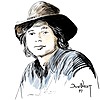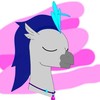HOME | DD
 melvynyeo — Banana Stalk Fly
melvynyeo — Banana Stalk Fly

#banana #fly #stalk
Published: 2016-10-30 07:35:30 +0000 UTC; Views: 2891; Favourites: 124; Downloads: 0
Redirect to original
Description
Taken at night in Singapore forest.Quote from en.wikipedia.org/wiki/Neriidae
The Neriidae are a family of true flies (Diptera) closely related to the Micropezidae. Some species are known as cactus flies, while others have been called banana stalk flies and the family was earlier treated as subfamily of the Micropezidae which are often called stilt-legged flies. Neriids differ from micropezids in having no significant reduction of the fore legs. Neriids breed in rotting vegetation, such as decaying tree bark or rotting fruit. About 100 species are placed in 20 genera. Neriidae are found mainly in tropical regions, but two North American genera occur, each with one species, and one species of Telostylinus occurs in temperate regions of eastern Australia.
Most species of Neriidae are slender, long-legged flies. Many exhibit striped patterns that appear to provide camouflage against tree bark. Many neriids are sexually dimorphic, with males having more elongated bodies, heads, antennae, and legs than females. In some species, the male fore-tibia is greatly thickened distally. Neriid flies are saprophagous. Larvae develop in rotting vegetable matter, including bark and fruit. Neriid adults tend to aggregate on rotting vegetable matter or damaged tree trunks. Neriid adults are also attracted to flowers or other sources of sugar. The upper face has a medial division and the antennae are porrect. The arista on the antenna arises at the tip (not dorsally, as in the Micropezidae). The fore legs are long with prominent coxae. In the Micropezidae, the fore legs are reduced. The fore femora (and sometimes all femora) bear ventral spines in males. The fore tibia of males may have rows of spines or tubercles. The third and fourth veins of the wing converge at the tip and the first vein is not setulose.[1] Neriids have 1-5 frontal bristles, no ocellar bristles and some have reduced postvertical bristles.
Related content
Comments: 9

Amazing photo... and thanks again for all the interesting information!
👍: 0 ⏩: 0

Great: what a strange and funny picure (for us!)
👍: 0 ⏩: 0

Ha ha! This one looks like a banana all right.
👍: 0 ⏩: 0

Is it... Peeing? Or perhaps laying an egg? That drop looks so odd xP
👍: 0 ⏩: 0























